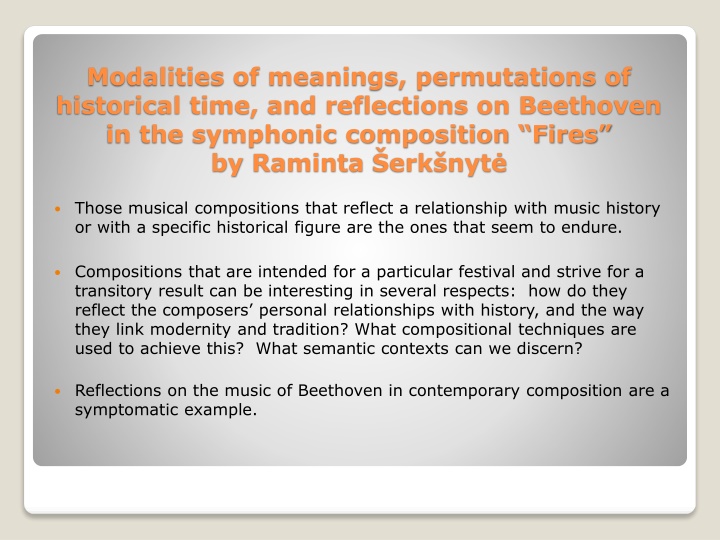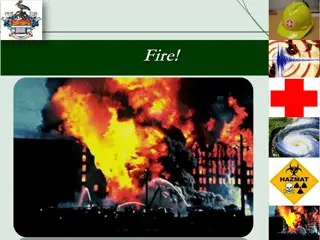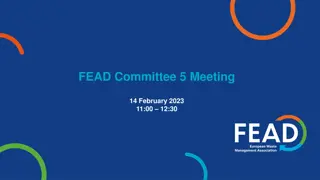
Reflections on Beethoven in Contemporary Music Composition
Explore the enduring significance of musical compositions that reflect relationships with music history, focusing on the symphonic work "Fires" by Raminta Čerknyt. Discover how composers intertwine modernity and tradition, employing various techniques to blend historical references with postmodern interpretations of Beethoven's legacy. Delve into examples by Louis Andriessen, Michael Gordon, and Lithuanian composers, revealing diverse perspectives inspired by Beethoven's music.
Download Presentation

Please find below an Image/Link to download the presentation.
The content on the website is provided AS IS for your information and personal use only. It may not be sold, licensed, or shared on other websites without obtaining consent from the author. If you encounter any issues during the download, it is possible that the publisher has removed the file from their server.
You are allowed to download the files provided on this website for personal or commercial use, subject to the condition that they are used lawfully. All files are the property of their respective owners.
The content on the website is provided AS IS for your information and personal use only. It may not be sold, licensed, or shared on other websites without obtaining consent from the author.
E N D
Presentation Transcript
Modalities of meanings, permutations of historical time, and reflections on Beethoven in the symphonic composition Fires by Raminta erk nyt Those musical compositions that reflect a relationship with music history or with a specific historical figure are the ones that seem to endure. Compositions that are intended for a particular festival and strive for a transitory result can be interesting in several respects: how do they reflect the composers personal relationships with history, and the way they link modernity and tradition? What compositional techniques are used to achieve this? What semantic contexts can we discern? Reflections on the music of Beethoven in contemporary composition are a symptomatic example.
The image of Beethoven inspires especially varied contemporary responses and a wide spectrum of interpretational strategies, employing the pluralism that is postmodernism. In The 9 Symphonies of Beethoven (1970) Louis Andriessen expresses his view of Beethoven by selecting material from all nine of his symphonies and presenting a postmodern mix in a mashup approach. Andriessen creates a musical montage that is reminiscent of a parodical collage that digresses into jazz, uses fragments not just from Beethoven. The finale includes numerous repetitions of the final cadence as a spoof. We might conjecture that Andriessen sought to present a postmodern criticism of musical tradition and inflated symphonic music practices; maybe even to contextualize the social and political discourse of the seventies regarding the upheaval in values. Rewriting Beethoven's Seventh Symphony by Michael Gordon commissioned for the 2006 Beethoven festival in Bonn. The composer filtered the classics through the prism of the twenty-first century and created (or REcreated) a new composition. In Gordon s creative process the material retains the classical structure, the hidden functions, yet presents a modern sound that is enhanced through a personal relationship with Beethoven s music. He has admitted that he was always inspired by Beethoven. Yet he questioned whether this type of rewriting transforms the music or whether it transforms him.
In Lithuanian contemporary music: Of the last few decades we observe the tendency to absorb the musical reverberations of great composers of the past, and to provide new meaning through the paradoxical contexts of the present. These kinds of reverberations are abundant in the works of Vidmantas Bartulis, Algirdas Martinaitis, Onut Narbutait , and Mindaugas Urbaitis. The performance-art piece Mein lieber Freund Beethoven... by Vidmantas Bartulis for two performers and tape (1987): the musical material is a collage compiled of deformed Beethoven musical fragments, while the surreal scenes on stage inspire associations with relevant issues of the day regarding culture and its possible profanation. We encounter the unique contribution of Raminta erk nyt and her composition Fires for symphony orchestra. It became the foundation of this paper.
Fires premiered last year in Munich and Vilnius. It was commissioned by the Bavarian Radio orchestra s director Mariss Jansons. He envisioned a performance cycle of all the Beethoven symphonies, but before or after each one he inserted a contemporary composition. Such commissions have also gone to Johannes Maria Staud, Misato Mochizuki, Rodion Shchedrin, Giya Kancheli, and J rg Widmann. Process: Knowing that the work would precede Beethoven s 5th symphony in the program, Raminta erk nyt chose Beethoven s signature introductory motive as the basis of her composition. erk nyt : I am a professional pianist and I usually discover and try out my musical ideas by improvising at the instrument. I arbitrarily played the famous opening motif of the Fifth Symphony and proceeded to change it to a different rhythm and a faster tempo. I realized that this could be fantastic musical material. By changing expression and placing it in a repetitive context, I understood what I wanted .
MOTIF distinguishing segment, energetically and emotionally charged symbol, Fate motif . BEETHOVEN universal psychological persona, as a fiery character that allows the display of a wide range of emotions. In creating Fires erk nyt considered Beethoven s fateful impending deafness as he was composing the fifth symphony. It was a real challenge to accommodate a specific piece of music. As noted by Theodor Adorno this inevitably limits the breadth of available creative materials. Up until this time erk nyt had not used quotations and had not composed homage pieces. She even admits that she does not like to forage through history or to consciously include its manifestations in her creative conceptions.
The most vivid childhood impression of her first experience at a symphonic music concert was Beethoven s Fifth. The symphonic music of Beethoven in large part determined her creative footprint and her particular concentration on orchestral material. Fires might be considered the working out of a momentous childhood imprint. imprint consequence consideration
The main idea of her piece the symbolism of FIRE. The composer had been thinking about a special semantic field which she describes in her own annotation: a work that reveals the various forms of fire, exhibiting the profusion of color and form that occurs in the processes of heating, burning and melting. Since the year 2000 erk nyte has composed a series of symphonic works whose titles are related to the elements of nature and their phenomena: Iceberg Symphony the element of water with its positive and destructive effects. Mountains in the Mist Image of a mountain, the linkage of nature s elements (earth and air). This concept also applies to compositions Glow , and the cantata-oratorio Songs of Sunset and Dawn. erk nyt : For me, music is a spiritual language that is translated into the language of musical symbols. Often my musical scores are accompanied by a separate notebook a sort of diary in which I record the visual and literary associations of the piece being composed .
The original idea of Fire with the commissioned theme of Beethoven Dual conception of the piece Power orchestra with subtle impressionistic sounds The composer calls this musical effect bipolar effect Two poles are the keys to understanding all of the arising modalities of meaning and reception
The musical material of Fires: A two-part composition: Part I Misterioso, attaca segues into Part II Con brio. The material is developed by varying the harmony, rhythm, texture and timbre of segments of the Symphony No. 5 motif. Part I: resting points on E-flat and the bottom fifth -- A-flat, layering in major and minor thirds and seconds. Tempo Lento sostenuto. The dynamic development is held back in preparation for an outbreak. Sudden, pronounced, dynamic blasts. Part II: segments of the motif are increasingly dynamic and intensive, the rhythm in triplets, the tempo Allegro molto. In the last bars the precise rendering of Beethoven s C-minor motif. the culmination of the work s finale:
Beethovens drama of impending deafness. association with burning, glowing, ashes, volcanoes the process of the motif s crystallization birth from fire Burn-out syndrome Semantic counterpoints
The Fifth symphony continuation of a previous story Fires The story of the motif s genesis The Fate motif is still being created Conventional motif knocked on the door Continuation of a previous story, final. Birth from fire Diptych: Fires as prehistory to Symphony No. 5
The Fifth symphony (1808) Fires (2010) The permutations of historical time The chronology of the diptych is a paradox. The Fifth symphony is no longer an absolute given, but a continuation of a previous story; the narration of what happened when the conventional motif was finally formed and knocked on the door. However, when we listen to this continuation, we must go back to 1808.
At the premiere in Vilnius at the Gaida festival, the trajectory of a good segment of the audience was aimed at the mythological image of fire that is akin to our cultural typecast. The meaning of the use of Beethoven and his motif was not grasped. This was largely due to an unsuccessful performance. The conductor, Roland Freisitzer, did not adequately study the material and did not convey the full concept of the piece. The happenstance context of the performance was also a contributing factor. The audience in Munich was especially intrigued with the relationship between a representative of another country and German cultural and historical space. The result was a success, magnified by the performance of the Bavarian Radio Symphony Orchestra, conducted by Mariss Jansons, who fully disclosed the intended concept and the logical development. Especially favorable receptions from the audience and critics affirmed that successful historical-cultural communication had occurred. The reception of Fires has not been unambiguous
Conclusion Fires has revealed the semantic ties of the Lithuanian composer to the international world of academic music as never before. These ties were fundamental in erk nyt s choice of approach regarding historicity and forms of expression. In Fires, as in her other compositions, the composer does not attempt to conform to idiosyncratic standards of modernity. Having successfully filtered knowledge of twentieth and even nineteenth century symphonic music, erk nyt creates (but does not recycle) a fabric from a completely different present day acoustic. It is a new quality, a niche for conceptualizing history, expanded by psychological, as well as universal human, cultural and semantic linked experiences. For the present, this is a solid creative position from which erk nyt operates. It does not hinder and possibly facilitates the genesis of new artistic and possibly historical communication.






















